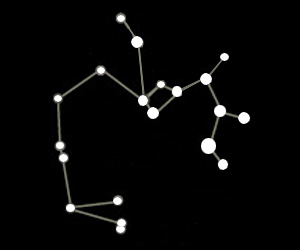Sagittarius Constellation Facts

Sagittarius has several bright stars making it easily visible in the night sky.
- Sagittarius is a relatively large constellation which is mainly visible in the southern hemisphere.
- In the Northern hemisphere the constellation can be viewed low on the horizon from August to October.
- In the Southern hemisphere Sagittarius can be viewed from June to November.
- The constellation of Sagittarius is often depicted as a teapot shaped asterism in star maps.
- Sagittarius lies near the galactic center of the Milky Way.
- The massive star forming region known as the Omega Nebula is situated within the boundaries of the constellation.
- It is thought that the super massive black hole that exists in the center of our galaxy is located within the Sagittarius constellation.
- One of the most luminous stars in our galaxy exists within the constellation, unfortunately it is not visible due to it being shrouded by cosmic dust.
- Sagittarius is the Latin word for archer and is also one of the twelve signs of the astrological zodiac.
Sagittarius Mythology

Sagittarius represents a Centaur, a half man half horse creature from Greek mythology.
Main Stars in the Sagittarius Constellation

The number next to each star is its apparent magnitude, its brightness from our point of view
on Earth, the lower the number the brighter the star in the night sky.
Also known as Beta Sagittarii or Arkab Prior, Arkab is a two star system around 378 light years from Earth, it appears very close in the sky to another star, as a result both are known as Beta Sagittarri. Rukbat
Also known as Alpha Sagittarii, Rukbat is a blue main sequence star with surface temperatures more than twice that of the sun, it is around 180 light years from Earth. Ascella
Also known as Zeta Sagittarii, Ascella is a binary star system around 90 light years from Earth, both stars are white giants orbiting each other every 21 years. Kaus Australis
Also known as Epsilon Sagittarii, Kaus Australis is a binary star system around 140 light years from Earth and the brightest component in the constellation, the primary star is a blue giant around 7 times larger in radius than the sun. Kaus Borealis
Also known as Lambda Sagittarii, Kaus Borealis is an orange sub-giant star around 80 light years from Earth, the star is around 11 times larger in radius than the sun. Nash
Also known as Gamma Sagittarii, Nash is an orange giant star around 100 light years from Earth, the star is around 12 times larger in radius than the sun.
Finding Sagittarius - Northern Hemisphere

Finding Sagittarius - Southern Hemisphere
